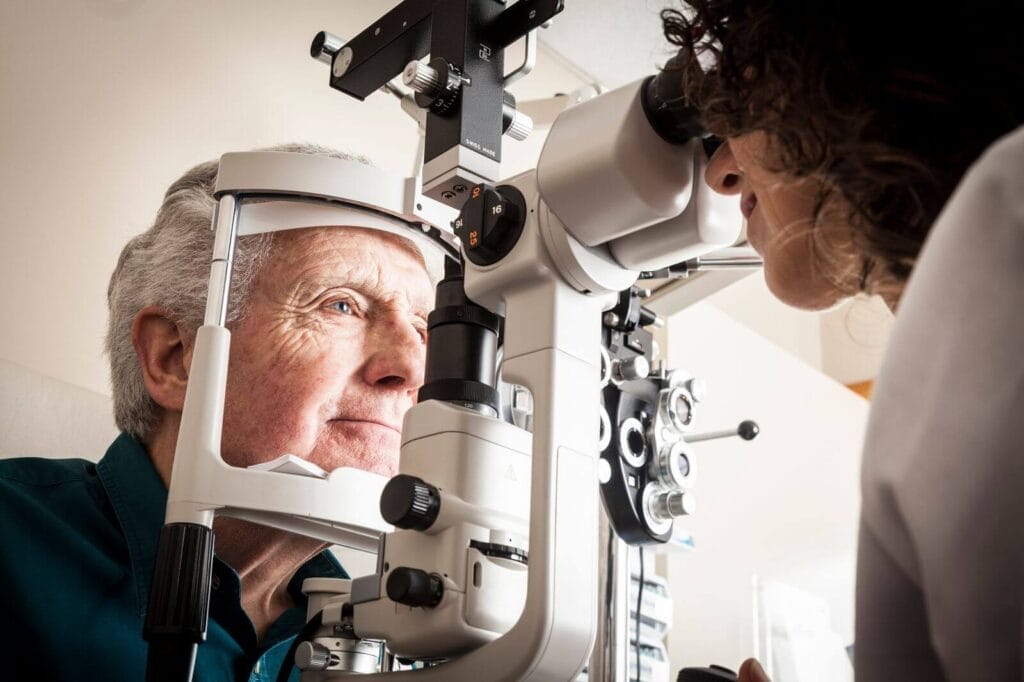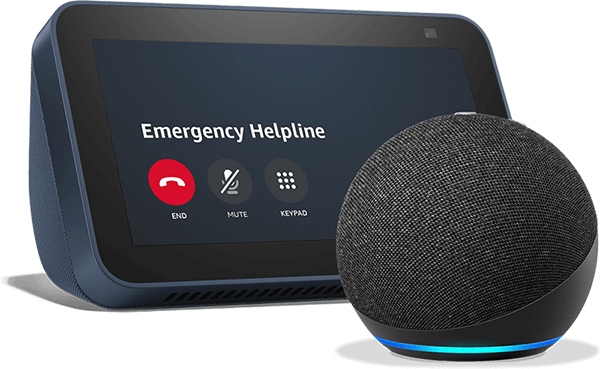
If you or a loved one has low vision or vision problems, safety concerns can make it difficult to continue living at home. Luckily, there are strategies and steps you can take to ensure the safety of someone living in their home with vision loss. Let’s examine what low vision is and three ways you can help your parent with vision loss.
What is low vision?
Low vision is not the same as blindness. It is an irreversible vision impairment that cannot be corrected with glasses, contact lenses, medicine, or surgery. Since some vision remains, it is not considered blindness, but it greatly impacts an individual’s ability to go about daily activities.
Several age-related conditions can cause low vision, many of which can be treated to prevent further vision loss. Yearly eye exams are essential to detect these diseases, in addition to checking if vision has changed and providing updated corrective lenses.
- • Age-related macular degeneration (AMD): Macular degeneration is a condition that affects the part of the retina responsible for the central part of vision. Most types of macular degeneration are untreatable.
- • Glaucoma: Glaucoma is a disease that can cause vision loss and blindness by damaging the optic nerve. If caught early, glaucoma can be treated, but damaged vision won’t be restored.
- • Diabetic retinopathy: Diabetic retinopathy is damage to the blood vessels in the retina caused by diabetes. Diabetic retinopathy can be treated, but vision loss is usually permanent, with the possibility of some sight restoration.
- • Cataracts: Cataracts are a clouding of the eye’s lens, causing blurred or cloudy vision. Cataract surgery can restore lost sight.
Maximize home safety for your parent with vision loss
Low vision can significantly complicate an individual’s safety and comfort. Falls are the biggest concern for people with low vision. You should assess each room in the home and make adjustments to increase safety. You can’t eliminate the possibility of falling, but you can minimize the risk.
- • Optimize lighting: Adequate lighting is critical for people with low vision. Not all lighting works well for people with low vision. For example, lighting with a cooler, bluer color works better than warmer light. Take some time to consider lighting choices that best suit your needs.
- • Fall prevention and exercises: Low vision increases the risk of falls. Ensure that the home is safe by removing obstacles like loose rugs and arranging furniture so it is easy to get around. Place commonly used items within easy reach. Working with a physical therapist or doing exercises to improve balance and strength can help prevent falls and increase confidence in mobility.
- • Install handrails and grab bars: Install handrails along all interior and exterior stairs for security. The bathroom should have grab bars beside the toilet and in several locations in the shower. Contact an occupational therapist or a Certified Aging-in-Place Specialist (CAPS) to assist with appropriate placement.
- • Arrange for transportation: People with low vision may have to stop driving. Consider hiring home caregivers to provide transportation to appointments and activities. Rideshare services like Lyft or Uber may also be useful.
- • Get a medical alert system: A medical alert system can provide a sense of security for someone with low vision and give you peace of mind. Independence is important, and a medical alert system can encourage confidence in your loved one in knowing that they can contact someone in an emergency or that fall detection will alert someone to come help.
Check in and visit frequently
If you have a loved one with low vision who lives independently, do everything you can to encourage and promote independence. At the same time, make an effort to evaluate safety and quality of life by calling and visiting. Ensure your loved one commits to regular ophthalmology appointments and continues any recommended treatment.
Encourage your parent to maintain emotional well-being
With vision loss, your loved one may struggle to enjoy hobbies they used to love, like reading, knitting, or woodworking. Losing hobbies can be depressing and demoralizing, but there are possibilities to explore. Try to find or create other enjoyable activities to replace lost ones, like music or exercise. Assistive devices like large-print books, audiobooks, magnifiers, and screen readers can also help. Remember that vision loss can lead to isolation and loneliness. Make sure to get out and socialize with loved ones as much as possible.
While living with vision loss presents many challenges, living a full and rich life with low vision is possible. Following tips to ensure safety in the home is the first step in maintaining health and well-being. With the right knowledge, you or a loved one can maintain independence while living with low vision.








